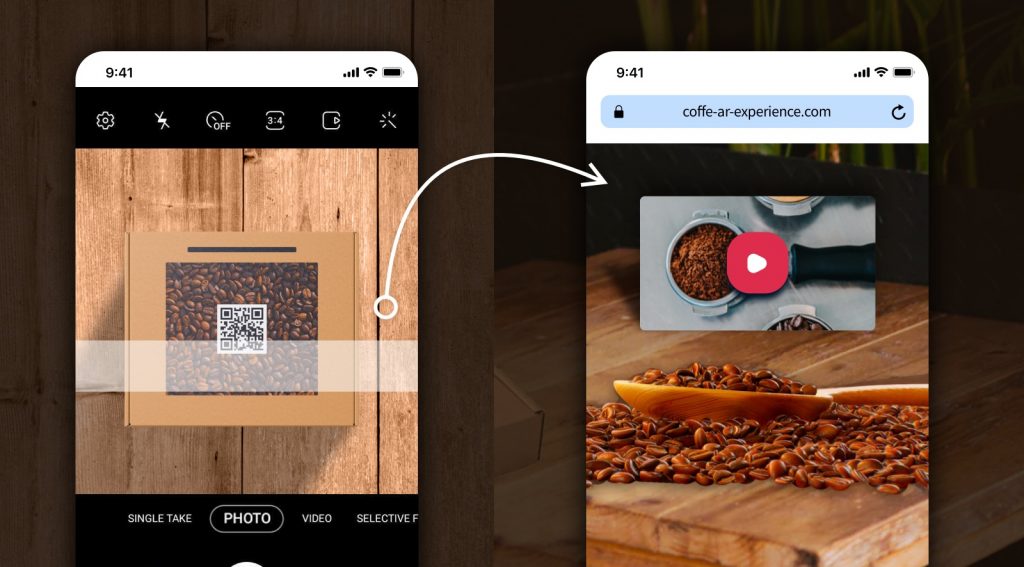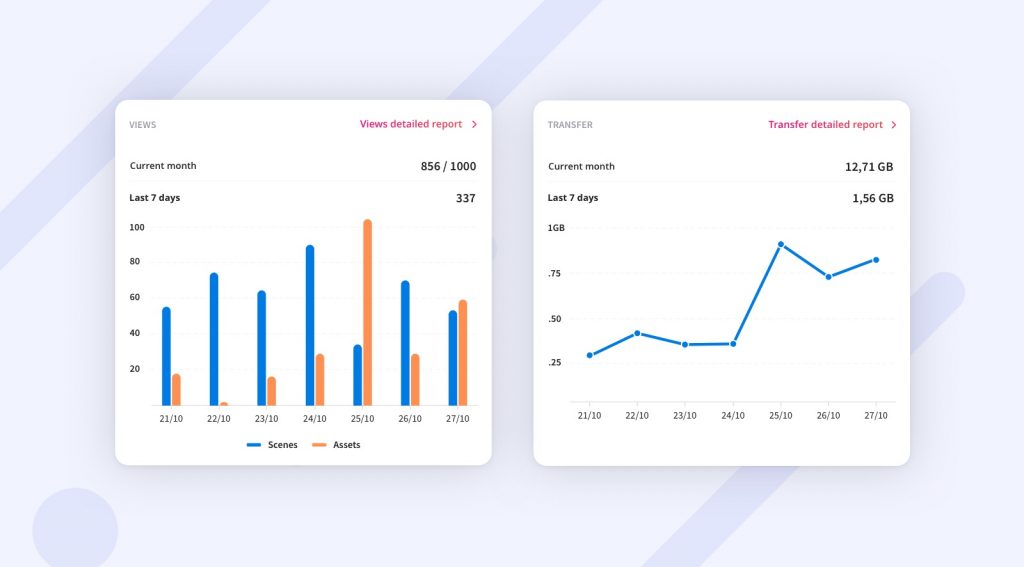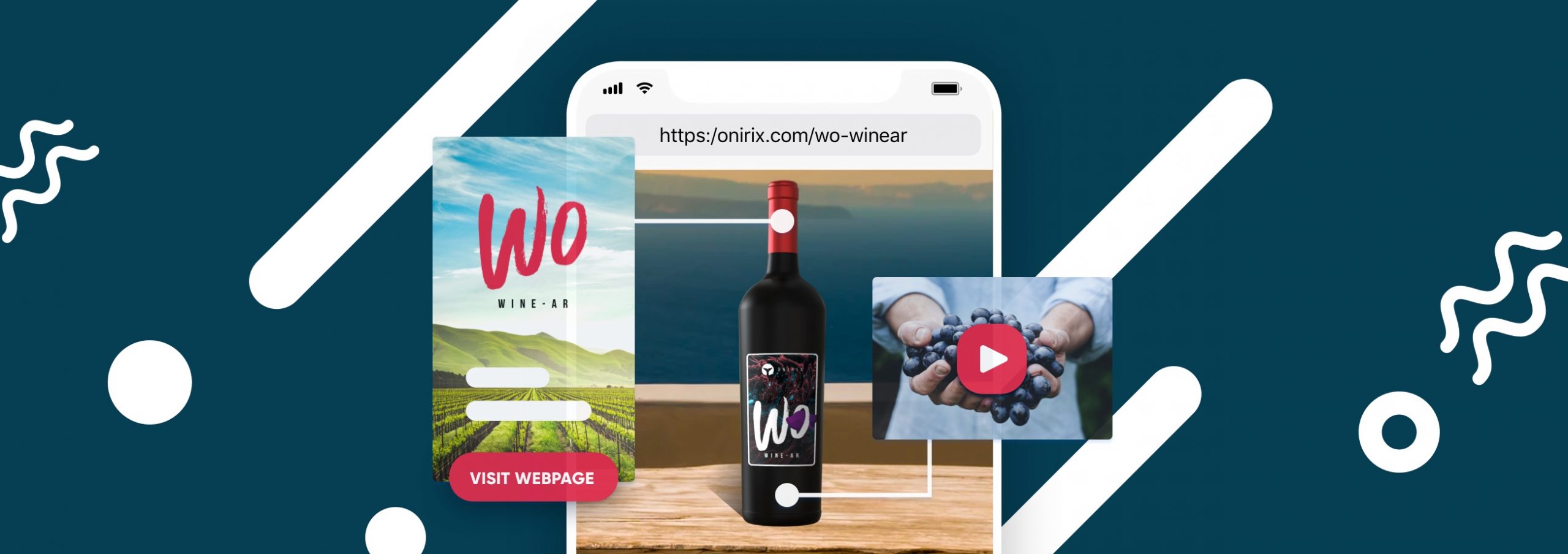Examples of augmented reality web (webAR) for packaging
Contents
One of the most widespread uses of augmented reality, within the world of marketing or advertising, is undoubtedly the creation of content for product packaging. With this technology, it is possible to create a new channel of interaction between the consumer and the brand. The physical image of the container is thus related to innumerable possible augmented reality experiences.
From the creation of interactive games, relevant information such as nutritional aspects, association of commercial videos, or the explanation of the manufacturing process, with a fun animated scene. Any excuse is good to give life to the inanimate object in front of us.
In the case of bottles of wine, or a package of cereals, it is especially interesting. They are containers with a longer life cycle than other products, and when consuming them, we often interact with the container: the wine bottle, the cereal box. That is why they are very clear examples where you can take advantage of this life cycle, and provide information for the consumer. This, in addition to generating value for buyers, generates value for the brand: image and relevance, engagement, statistical measurement, cross-information, related offers, prospecting capacity, etc.
The advantage of web augmented reality or webAR for packaging
Augmented reality in web browsers, or webAR, is the evolution of this technology towards a much more widespread use, mainly in sectors such as marketing or advertising. Today we all have a mobile phone in our pocket, and those phones always include at least one web browser. Thanks to webAR, it is therefore achieved that the user does not have to download a specific app for each possible experience that he wants to consume since he has the browser for this: Chrome, Safari.
This, together with the expansion of the use of QR codes, due to the Covid era, makes the phone’s camera an essential tool: I detect a QR, it takes me to a web page, on that page I have an experience of augmented reality that I consume through the camera.


This increased ease-of-use and accessibility of technology only encourages the sharing of your content. The same thing that happens today with social networks, will happen in the future with this type of enriching experiences. In fact, the networks themselves begin to include this type of experience, little by little, in their dynamics.
Enrich the experience: statistics, gamification, wow effect.
The use of this type of technology in a sector such as marketing or sales, alone does not have a crucial value for the end customer. It is true that a wow effect is generated, or improvement of brand image, which is directly related to the quality of the experience. It is not the same to offer little useful information for the end-user, than to show them a very elaborate animation that enriches them. But in addition to the brand effect itself, other elements can be included in the experience that are very interesting for the manufacturer.


Measurements and statistics of the use of the experience can be carried out, and therefore, generate a traceability of how many people interact with the product. Very interesting information can be obtained from this: buyer profile, in which area a specific product is most liked, which parts of the campaign have the most traction. These measurements provide information that will help you make better decisions in the future.
You can also add gamification or loyalty processes. By providing a small interactive dynamic on the product itself, actions can be generated that promote several essential aspects: better customer relationship with the product, invitation to share the brand, loyalty through points or prizes.
In addition, these dynamics can be related to other interesting information, such as locations of establishments. With this, therefore, one more objective is achieved, which is to direct the audience to certain places at certain times, or to relate the product to other similar products or offers. This is a task that can considerably enhance cross-selling, both of products and establishments.
How to design, validate, share and customize the experience
Thanks to our content management and editing platform, Onirix Studio, anyone can easily create an augmented reality experience. It would simply be to take a photograph of the packaging on which you want to place the increased information, and add the elements to be displayed: a video, an animated 3D object, information of interest, links …
In addition, with the webAR module, this experience can be shared quickly. The project is simply published, and by means of a QR code, or a web link, anyone can consume the same experience on the product in question. This part is ideal to carry out a demo and validate a possible project, internally, with a client, etc.
After that, when you want to adapt the experience to the end customer’s brand, that’s when it’s time for customization. With Onirix you can create experiences adapted to the customer’s branding. For this, a system is provided that allows modifying the general aspect of the experience, simply by embedding the web part that corresponds to augmented reality, within any web page. This is what we call custom domains. It is to create a specific web page for a campaign, embedding the Onirix augmented reality viewer in it. On this page we explain this in much more detail.
AR, as you can see, is a solution that can be applied in a multitude of sectors and can be adapted and customized to any brand and action. If you want to see more cases, we invite you to read our post about the 10 most outstanding examples of augmented reality in Onirix.



